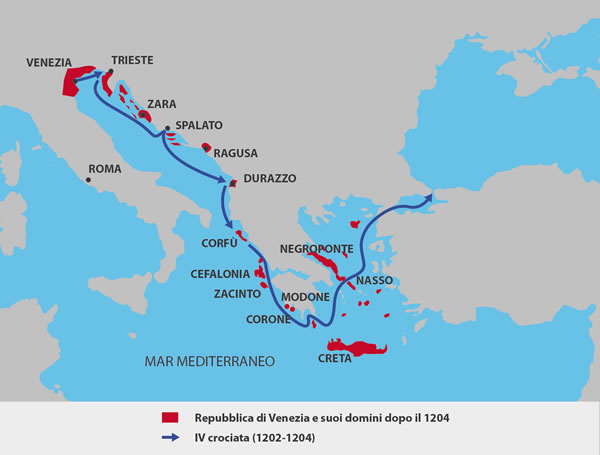In May 1202, on the eve of the Fourth Crusade, with the pretext of suggesting a few changes in the economic agreements for the transport of troops to Jerusalem to the promoters of the crusade, the Doge Enrico Dandolo made some decisive changes in the sea routes.
One of the reasons for these changes was an attempt to smother the revolts in Zadar and Trieste, which were under the protection of the Kingdom of Hungary and were trying to escape Venice’s sway.
Another reason was to deal with the difficult situation in Byzantium in 1170, where the Emperor Comnenus was forced to decree the arrest of all Venetians and the confiscation of their property owing to pressure from the local population, dissatisfied with their huge commercial privileges.
The crusade troop route was completely revised , now headed north to conquer the two rebel towns and then east for the conquest of Constantinople (15th April 15), thus marking the beginning of the Eastern Roman Empire under Venetian protection .
Finally, the route headed south towards Jerusalem.
Following the division of the former territories of the Byzantine Empire between the Crusaders and the Venetians, Venice gained almost total control of trade routes to East and spoils of war of extraordinary beauty and value were carried back to Venice, helping enrich the city: marble and works of art, including four bronze horses taken from the Hippodrome in Byzantium, now sitting above the facade of St. Mark’s.
Venice now controlled a powerful, rapidly expanding trading empire and the Venetian flag of San Marco flew over much of the eastern Mediterranean.
In the 13th Century, at the height of its power, Venice dominated much of the Adriatic coast, Dalmatia, Istria, many of the Aegean islands, Crete, Cyprus and Corfu. It was also the main military power and one of the main trading powers in the Middle East.



